Roland Edirol Motion Dive.tokyo Console MD-P1 Handleiding
Roland
Niet gecategoriseerd
Edirol Motion Dive.tokyo Console MD-P1
Bekijk gratis de handleiding van Roland Edirol Motion Dive.tokyo Console MD-P1 (4 pagina’s), behorend tot de categorie Niet gecategoriseerd. Deze gids werd als nuttig beoordeeld door 16 mensen en kreeg gemiddeld 4.7 sterren uit 8.5 reviews. Heb je een vraag over Roland Edirol Motion Dive.tokyo Console MD-P1 of wil je andere gebruikers van dit product iets vragen? Stel een vraag
Pagina 1/4

motion dive .tokyo console Owner’s Manual
Basic Operation
Read me first
04121223 ’05-10-1N
The most important thing about this hardware console is that it’s “easy to understand.” The “motion dive .tokyo console” is designed with the
same form of interface as motion dive. Operating the “motion dive .tokyo console” is extremely simple; this page contains everything there is to
know about it.
The “motion dive .tokyo console MD-P1” is a dedicated
controller for the “motion dive .tokyo” software. Roland
provides no guarantee or support regarding its use with
any software other than “motion dive .tokyo”.
For details on using the software “motion dive .tokyo” refer to
the separate “motion dive .tokyo” manual.
2
3
1Select the target.
Select the clip.
Execute.
Selecting a clip
1
2
Assignable controls
You can assign various operations to the two knobs
A (left side) and B (right side). In the Total Control
Modules area, open MIDI to specify what you want to
assign.
Click [MIDI].
Specify what you want to assign.
The following choices are available:
• Hold down the computer’s Ctrl (control) key and turn
the MD-P1’s VISUAL PLUGIN CONTROL knob to
change the FX MODULES.
• Hold down the computer’s Ctrl (control) key and turn
the MD-P1’s TOTAL FADER CONTROL knob to
change the TOTAL CONTROL MODULES.
• Hold down the computer’s Ctrl (control) key and turn
the MD-P1’s ASSIGNABLE CONTROL knob to
adjust the ASSIGNABLE CONTROL parameter.
Operations in conjunction with the Ctrl key
PLAY POSITION
SPEED CONTROL
COLOR EQ (Fore)
COLOR EQ (Back)
LOOP START POSITION
LOOP END POSITION
BPM
Adjusts the playback point
Adjusts the speed
Adjusts the foreground
plug-in color EQ
Adjusts the background
plug-in color EQ
Adjusts the loop start point
Adjusts the loop end point
Change the BPM

Installation and setup
Starting-up for the first time
Installing
Uninstalling
“My MDTCTune” folder structure (video, music, plug-ins, etc.)
“motion dive console” folder (the application itself)
User registration
Exiting the software
The user registration screen will appear the first time you start up the software. Please
follow the on-screen instructions to complete your user registration.
Starting motion dive
Start up motion dive.
From the “motion dive .tokyo” menu, choose “Quit” or click the “x” button located in
the upper right of the window.
To install motion dive, you’ll need the DVD-ROM included with this product.
Regardless of the operating system you’re using (Windows or Mac OS), insert the
DVD-ROM marked “Install DVD-ROM.”
The installer will start up, and the installation procedure will be shown on the
screen.
The explanations shown on the screen contain important information such as
instructions on how to defeat installation restrictions for each operating system, so
be sure to read them carefully without skipping anything.
In order to install the USB driver, you’ll need the DVD-ROM that’s included with this
product.
Regardless of the operating system you’re using (Windows or Mac OS), insert the DVD-
ROM marked “Install DVD-ROM.” Navigate to the “Driver” folder of the DVD-ROM,
and start up the installer (this will be for Windows, Setup.exe
and MD-P1USBDriver.pkg for Mac OS) to install the USB driver.
For details on installing the USB driver, refer to “ ” on the Installing the USB driver
back of this sheet. You must install the driver by following this procedure.
If you need to uninstall the USB driver, follow the instructions for “Removing the
driver” in “Hardware-related FAQ” on the back of this sheet.
The procedure for uninstalling motion dive will depend on your operating system.
o Windows: The Start menu will contain a uninstaller named “remove motion dive.”
Select this, and follow the instructions that appear in the screen.
o Mac OS X: You can uninstall from the installer popup menu, or you can uninstall by
dragging the “motion dive console” folder from the “Applications” folder into the trash.
As a note of caution that applies to all operating systems, the motion dive uninstaller does not delete files
created by the user. If you want to completely remove all data, or to perform a clean reinstallation, you can
manually drag the “My MDTCTune” folder into the trash. The “My MDTCTune” folder is located in the folder
structure described below.
The “My MDTCTune” folder contains the videos, still images, music, and plug-ins you
will use in motion dive. You’ll use this folder when you want to add plug-ins or music
files, so remember its location.
Windows: Normally this will be located in the root directory of the C drive
(C:\My MDTCTune).
Mac OS: This will be in the same folder as the motion dive application.
“Library” folder
This folder contains videos, still images, and Flash movies for use in motion dive, as
well as Macro setting files. Normally you will not need to access this folder.
“Musics” folder
If you have MP3 format music files that you want to use with the “MUSIC PLAYER”
plug-in within motion dive, you can manually add them to this folder. Initially, this
folder contains several songs with bonus sounds.
“Plug-ins” folder
Optional plug-ins that add additional visual operations or expand the functionality of
motion dive can be added to this folder. Several types of plug-ins will already be in this
folder at the time of installation.
“Texts” folder
This folder contains patterns (text layer files) for use with the “Text plug-in” that
display realtime motion typography (titles) within motion dive. You can create them
yourself.
“Actions” folder
This folder contains Flash movies for use with the “Action plug-in.” You can create
them yourself.
“MIDI note” folder
This folder contains files for use with the “MIDI note plug-in.”
In Windows, you can use a shortcut key to open the “My MDTCTune”
folder from the “Start menu” in a single operation.
In Macintosh, this folder is located in the same level as the
application.
This contains the motion dive application itself. Normally you will not need to perform
operations in this folder.
• Windows: Normally this will be created in the
“ ” folder.c:\Program Files\digitalstage
• Mac OS X: This will be created in the “ ” folder of your startup disk.Applications
In OS X, this will be installed in the “Applications” folder of the system domain.
When installation is completed, the following folders and files will be created.
Installing or uninstalling
motion dive .tokyo
Folder structure
Installer
MDP1USBDriver.pkg (Mac OS)
Setup.exe (Windows)
Windows (Start menu)
Macintosh
User Registration Window
Opening the “My MDTCTune” folder
2
Installing the USB driver
Uninstalling the USB driver
Welcome to the motion dive .tokyo Performance Package!
This package consists of the software together with the dedicated motion dive .tokyo
motion dive .tokyo MD-P1 hardware (which we’ll refer to as the “ ”), giving you MD-P1
the perfect VJ environment. Never again will you have to use your computer keyboard
for VJ performance!
In order to start using this package, the first thing you need to do is install the “USB
driver MD-P1” for the into your computer.
Installing the USB driver for
motion dive .tokyo console “MD-P1”
1
3
4
[ User registration procedure ]
To register as a user, please follow the steps listed
on the red “Product registration card” (Digital
Stage) included in the package.
The serial number (11 digit install code) required
for user registration is printed on this card.
Uninstaller (Windows)
motion dive .tokyo console “MD-P1”
The “USB driver” is software that lets your computer use the MD-P1.
You must proceed as follows to install the driver before using a USB
cable to connect the MD-P1 to your computer.
Connect the MD-P1 to your computer before you start up
“motion dive .tokyo”.
The “motion dive .tokyo” software will not start up unless the dedicated
MD-P1 hardware console is connected. (The screen will indicate “MIDI
devices not found! Please connect with MD-P1” and the program will
exit.)
If the above error appears even though the MD-P1 is connected, it is
possible that the USB driver is not installed correctly. Please read
“Hardware-related FAQ” on the other side of this sheet, and re-install
the USB driver.
Don’t disconnect the MD-P1 from your computer while “motion
dive .tokyo” is running.
This may cause the system to stop operating correctly.
Turn off the standby (suspend) and sleep settings of your
computer.
If your computer enters standby (suspend) or sleep modes while
“motion dive .tokyo” is running, it may stop working correctly. If your
computer should enter standby (suspend) or sleep modes, you should
exit the “motion dive .tokyo” software when the computer resumes
operation, and then re-connect the MD-P1 to your computer.
For details on using the “motion dive .tokyo” software, refer to the separate
“motion dive .tokyo Owner’s Manual.”
Using the “motion dive .tokyo” software
For details on using the MD-P1 hardware, refer to “Basic operation of the
motion dive .tokyo console” in this leaflet.
Using the MD-P1 hardware
motion dive .tokyo Owner’s Manual
Before using this unit, carefully read the sections entitled: “USING THE UNIT SAFELY” and “IMPORTANT NOTES.” These
sections provide important information concerning the proper operation of the unit. Additionally, in order to feel assured that
you have gained a good grasp of every feature provided by your new unit, Owner’s manual should be read in its entirety. The
manual should be saved and kept on hand as a convenient reference.
Microsoft and Windows are registered trademarks of Microsoft Corporation.
Windows® is known officially as: “Microsoft® Windows® operating system.”
The screen shots in this document are used in compliance with the guidelines of the Microsoft Corporation.
Apple and Macintosh are registered trademarks of Apple Computer, Inc.
QuickTime and the QuickTime logo are trademarks or registered trademarks of Apple Computer, Inc., used under license.
Mac OS is a trademark of Apple Computer, Inc.
All product names mentioned in this document are trademarks or registered trademarks of their respective owners.
Copyright ©2005 ROLAND CORPORATION
All rights reserved. No part of this publication may be reproduced in any form without the written permission of ROLAND CORPORATION.
Copyright to this document and all of the software, data, creative works, photographs, music, and printed matter accompanying this product is the
property of the developing companies, the artists themselves, and the photographers. Copying or commercial use of this material other than as
allowed by the copyright holder is forbidden.
Copyright ©2005 digitalstage inc. All right reserved. Made in Japan.
mot ion dive .tokyo Owner ’s Manua l
Owner’s Manual

Installing the USB Driver
Windows XP/2000 users
Hardware-related FAQ
When motion dive .tokyo is started up, it
indicates “MIDI devices not found! Please
connect with MD-P1.” and exits
Is the MD-P1 connected correctly?
motion dive .tokyo will not start up if the “MD-P1” is not
connected. If the above error appears even though the MD-
P1 is connected to your computer, it may be that the USB
driver is not installed correctly. Read “Problems related to
the USB driver” (below) and reinstall the USB driver.
Is the driver name correct?
motion dive .tokyo recognizes the following driver name.
Windows version: EDIROL MD-P1
Mac version: MD-P1
Mac OS X users:
The driver name will be “MD-P1” at the time of installation,
but please be aware that if you intentionally rename the
driver, motion dive .tokyo will be unable to recognize the
MD-P1.
If you are experiencing problems with the “motion dive
.tokyo” software, please refer to the “FAQ” in the
separate “motion dive .tokyo” manual.
Problems with the “motion dive .tokyo” software
Installing the USB Driver
Mac OS X users
USB Cable
USB Cable
1. With the MD-P1 left unconnected, start up Windows. Do
not connect the MD-P1 to the computer until you reach
Step .12
Disconnect all USB cables except for a USB keyboard and
USB mouse (if used).
Log onto Windows using a user name that has
administrative privileges (such as Administrator).
2. Open the dialog box.System Properties
Windows XP users
1. Click the Windows start menu, and from the menu,
select Control Panel.
2. In “Pick a category,” click “Performance and
Maintenance.”
3. In “or pick a Control Panel icon,” click the System
icon.Depending on your setup, the System icon may
appear directly in the Control Panel (Classic view). If
so, double-click the System icon.
Windows 2000 users
1. Click the Windows Start menu, and from the menu
that appears, select Settings | Control Panel.
2. In Control Panel, double-click the System icon.
3. Click the Hardware tab, then click [Driver Signing].
The Driver Signing Options dialog box will open.
4. In the Driver Signing Options dialog box, select “Ignore,”
then click [OK].
If the current setting is “Warn” or “Block,” change this to
“Ignore.” Then, when you’ve finished installing the driver,
change it back to the original setting.
5. Click [OK] to close the System Properties dialog box.
6. Exit all currently running software (applications).
Also close any currently open windows. If you are using
virus checking or similar software, you must exit all of
these programs as well.
7. Insert “Install DVD-ROM” into your computer’s DVD-
ROM drive.
If the message “Windows can perform the same action
each time you insert a disk or connect a device with this
kind of file” appears, click [Cancel].
8. From the Windows start menu, choose “Run....”
The “Run...” dialog box will appear.
9. In the Open field of the Run dialog box, type the following
and click [OK].
D: \Driver\setup.exe
The drive name is “D:” in the example shown here, but
may be different on your system. Use the drive name for
your DVD-ROM drive.
If you experience problems, read this chapter first. It
contains tips for solving most problems.
For details on operating your Windows or Macintosh
computer, refer to the owner’s manual of the computer and
operating system you are using.
Problems related to the USB driver
Can’t install the driver correctly
Install the MD-P1 driver once again as described in
“ ”.Installing the USB Driver
Is the MD-P1 connected correctly?
Make sure that the USB connector of your computer is
connected to the MD-P1.
Could any other USB device be connected?
Before you install, disconnect all USB devices except for
your mouse and keyboard.
Could other software or resident software (such
as antivirus programs) be running?
Installation may not be successful if other programs are
running. Be sure to close all other programs before
installation.
Is the DVD-ROM correctly inserted into your DVD-
ROM drive?
Installation is not possible unless the DVD-ROM included
with the MD-P1 is inserted in your DVD-ROM drive.
Make sure that the DVD-ROM is correctly inserted into
your DVD-ROM drive.
The included DVD-ROM cannot be read by a CD-
ROM drive
Please provide an external DVD-ROM drive.
Are you attempting to install from a networked
DVD-ROM drive?
You cannot install from a networked DVD-ROM drive.
Is the DVD-ROM or the lens of the DVD-ROM
drive dirty?
If the DVD-ROM or the lens of the DVD-ROM drive is
dirty, the installer may not work correctly. Clean the disc
and/or lens using a commercially-available DVD cleaner
or lens cleaner.
Is your computer‘s power-conservation mode
turned off?
If power-conservation settings are enabled on your
computer, please disable any such settings.
For the procedure, refer to the owner’s manual of your
computer.
Is there sufficient free space on your hard disk?
Delete unneeded files to increase the amount of free space.
After deleting the unneeded files, empty the recycling bin.
Does your computer or USB hub have sufficient
power supply capacity?
The MD-P1 cannot be connected if insufficient power is
supplied to it. Check whether one of the following cases
apply.
• If you are using the MD-P1 with a notebook computer
that is running on its battery, operation may be
unreliable with some models of computer. If this is the
case, connect the AC adaptor to your notebook
computer.
• The power conservation mode of your computer may
limit the power that is supplied to USB. Check the
settings of your computer.
• In some cases, the MD-P1 cannot be used with a bus-
powered hub (a hub that does not contain a power
supply). Please use a self-powered hub (a hub that
contains a power supply).
Is USB enabled on your computer?
Refer to the operation manual for your computer, and
make sure that USB is enabled.
Does your computer meet the USB specifications?
If you are using a computer that does not fulfill the
electrical requirements of the USB specifications,
operation may be unstable. In this case, you may be able
to solve the problem by connecting a USB hub.
In the Device Manager, do you see “Other
device,” “Unknown device,” or a device for
which “?”, “!” or “x” is displayed? (Windows)
If the driver installation could not be successfully
completed, the installed driver may remain in an
incomplete state.
Re-install the driver. ( )➔“Installing the USB Driver”
Windows XP/2000 displays a “Hardware
Installation” or “Digital Signature Not Found”
dialog box
Did you make “Driver Signing Options”?
In order to install/re-install the driver, you must make the
settings described in .“Installing the USB Driver ”
You are asked to install the driver file even though
you installed the driver (Windows)
Did you connect the MD-P1 to a different USB
connector than the one you used when installing
the driver?
If your computer or USB hub has two or more USB
connectors, and you connect the MD-P1 to a different USB
connector, you may be asked for the driver file even
though the driver has already been installed in your
computer. (Such a response does not indicate a
malfunction.)
Proceed as follows to install the driver.
1. With the MD-P1 left unconnected, start up your
computer.
2. Connect the MD-P1 to the computer.
Windows XP:
1. The Found New Hardware Wizard dialog box will
appear.
If the message “Connect to Windows Update to
search for software?” appears, choose “No” and then
click [Next].
2. Choose “Search for the best driver in these locations”
and click [Next].
If a dialog box with an “!” or “x” symbol will appear,
click [Continue Anyway] to proceed with the
installation. If you are unable to continue, click [OK]
and repeat the driver installation. (➔“Installing the
USB Driver”)
Windows 2000:
If a dialog box indicating “Digital Signature Not
Found” will appear, click [Yes] to proceed with the
installation. If you are unable to continue, click [OK]
and repeat the driver installation. (➔“Installing the
USB Driver”)
3. The Completing the Found New Hardware Wizard
dialog box will appear. Click [Finish].
4. In the Driver Setup dialog box, click [Close].
If the Change System Settings dialog box appears, click
[Yes]. Windows will restart automatically.
“Find new hardware wizard” does not execute
automatically
“Find new hardware wizard” ends before the
process is completed
“Found unknown device” appears even though
you installed the driver
(Windows)
Is the USB cable connected correctly?
Make sure that the MD-P1’s USB cable and your computer
are correctly connected.
It may take about 15 seconds (or more) after the USB cable
is connected.
Does your computer or USB hub have sufficient
power supply capacity?
The MD-P1 cannot be connected if insufficient power is
supplied to it. Check whether one of the following cases
apply.
• If you are using the MD-P1 with a notebook computer
that is running on its battery, operation may be
unreliable with some models of computer. If this is the
case, connect the AC adaptor to your notebook
computer.
• The power conservation mode of your computer may
limit the power that is supplied to USB. Check the
settings of your computer.
• In some cases, the MD-P1 cannot be used with a bus-
powered hub (a hub that does not contain a power
supply). Please use a self-powered hub (a hub that
contains a power supply).
Is USB enabled on your computer?
Refer to the operation manual for your computer, and
make sure that USB is enabled.
Does your computer meet the USB specifications?
If you are using a computer that does not fulfill the
electrical requirements of the USB specifications,
operation may be unstable. In this case, you may be able
to solve the problem by connecting a USB hub.
10. The Driver Setup dialog box will appear.
Click [Next].
11. To begin the installation, click [Next] once again.
Installation will begin.
Windows XP users
If “Driver Signing Options” in step 4 is set to anything
other than “Ignore,” a dialog box with an “!” or “x”
symbol will appear. If a [Continue Anyway] button is
displayed, click [Continue Anyway] to proceed with the
installation. If you are unable to continue, click [OK] and
repeat the driver installation from step 1.
Windows 2000 users
If “Driver Signing Options” in step 4 is set to anything
other than “Ignore,” a dialog box indicating “Digital
Signature Not Found” will appear. If a [Yes] button is
displayed, click [Yes] to proceed with the installation. If
you are unable to continue, click [OK] and repeat the
driver installation from step 1.
The “Ready to install the driver” dialog box will appear.
12. Connect the MD-P1 to your computer.
A message of “Found New Hardware” will appear.
Please wait.
This unit is equipped with a protection circuit. A brief
interval (a few seconds) after connecting the MD-P1 is
required before the unit will operate normally.
Windows XP users
1. The Found New Hardware Wizard dialog box will
appear.
If the message “Connect to Windows Update to
search for software?” appears, choose “No” and then
click [Next].
2. Make sure that “EDIROL MD-P1” is indicated. Then,
choose “Install the software automatically
[Recommended]” and click [Next].
If “Driver Signing Options” in step 4 is set to
anything other than “Ignore,” a dialog box with an
“!” symbol will appear. Click [Continue Anyway] to
proceed with the installation.
Windows 2000 users
If “Driver Signing Options” in step 4 is set to
anything other than “Ignore,” a dialog box indicating
“Digital Signature Not Found” will appear. Click
[Yes] to proceed with the installation.
13. The Completing the Found New Hardware Wizard
dialog box will appear.
Click [Finish].
14. In the Driver Setup dialog box, click [Close].
If the Change System Settings dialog box appears, click
[Yes]. Windows will restart automatically.
If you changed the “Driver Signing Options” setting in
step 4, restore the original settings after Windows has
restarted.
This completes driver installation.
If the “Authenticate” dialog box appears during the
installation, input the password and click “OK.”
What you actually see on your computer screen may be
different, depending on your computing environment
and the operating system you’re using.
1. With the MD-P1 disconnected, start up the Macintosh.
Disconnect all USB cables except for a USB keyboard and
USB mouse (if used).
2. Exit all currently running software (applications).
If you are using virus checking or similar software, be
sure to exit it as well.
3. Insert “Install DVD-ROM” into the DVD-ROM drive of
your Macintosh.
4. In the folder of the DVD-ROM, Driver
double-click MDP1USBDriver.pkg.
A message such as “This Installer package needs to...”
may appear. Click “Continue.”
5. The display will indicate “Welcome to the EDIROL MD-
P1 Driver Installer.”
Click [Continue].
6. The display will indicate “Select a Destination.”
Click the drive in which the operating system is installed
to select it, and then click [Continue].
Select your startup disk as the drive.
7. The display will indicate “Easy Install.”
Click [Install] or [Upgrade].
8. The display will indicate “Installing this software
requires you to restart your computer when the
installation is done.”
Click [Continue Installation].
9. The display will indicate “The software was successfully
installed.” Click [Restart] to restart your computer.
10. Connect the MD-P1 to your Macintosh.
•Connect the cable to the USB connector of the Macintosh itself, not
to the USB connector of the keyboard.
• This unit is equipped with a protection circuit. A brief interval (a
few seconds) after connecting the MD-P1 is required before the
unit will operate normally.
• The MD-P1 will not work in the Classic environment of Mac OS X.
Use it when the Classic environment is not running.
Product specificaties
| Merk: | Roland |
| Categorie: | Niet gecategoriseerd |
| Model: | Edirol Motion Dive.tokyo Console MD-P1 |
Heb je hulp nodig?
Als je hulp nodig hebt met Roland Edirol Motion Dive.tokyo Console MD-P1 stel dan hieronder een vraag en andere gebruikers zullen je antwoorden
Handleiding Niet gecategoriseerd Roland
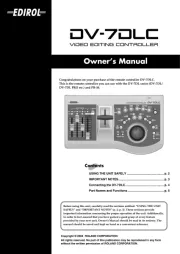
2 September 2025
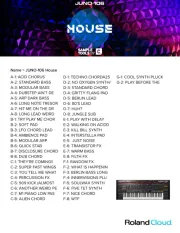
2 September 2025
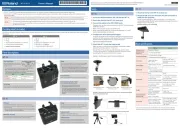
1 September 2025
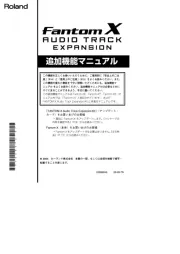
26 Augustus 2025
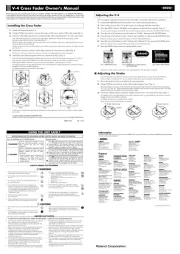
26 Augustus 2025
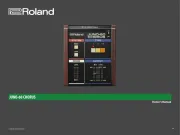
26 Augustus 2025
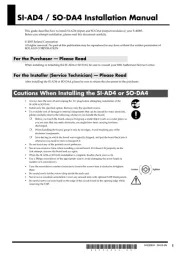
26 Augustus 2025
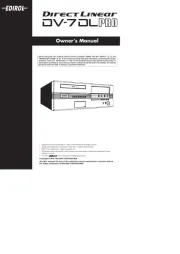
26 Augustus 2025
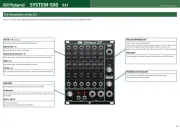
25 Augustus 2025
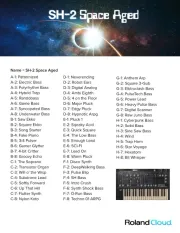
25 Augustus 2025
Handleiding Niet gecategoriseerd
- Hegel
- CMTECK
- Lincoln Electric
- Teenage Engineering
- Chieftec
- Gardebruk
- Kali Audio
- Enermax
- Möhlenhoff
- Victor Technology
- WEN
- Konig
- Godrej
- Cudy
- Xtorm
Nieuwste handleidingen voor Niet gecategoriseerd

13 September 2025

13 September 2025

13 September 2025

13 September 2025

13 September 2025

13 September 2025

13 September 2025

13 September 2025

13 September 2025
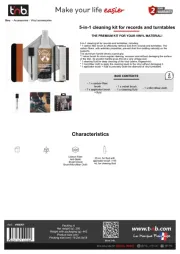
13 September 2025